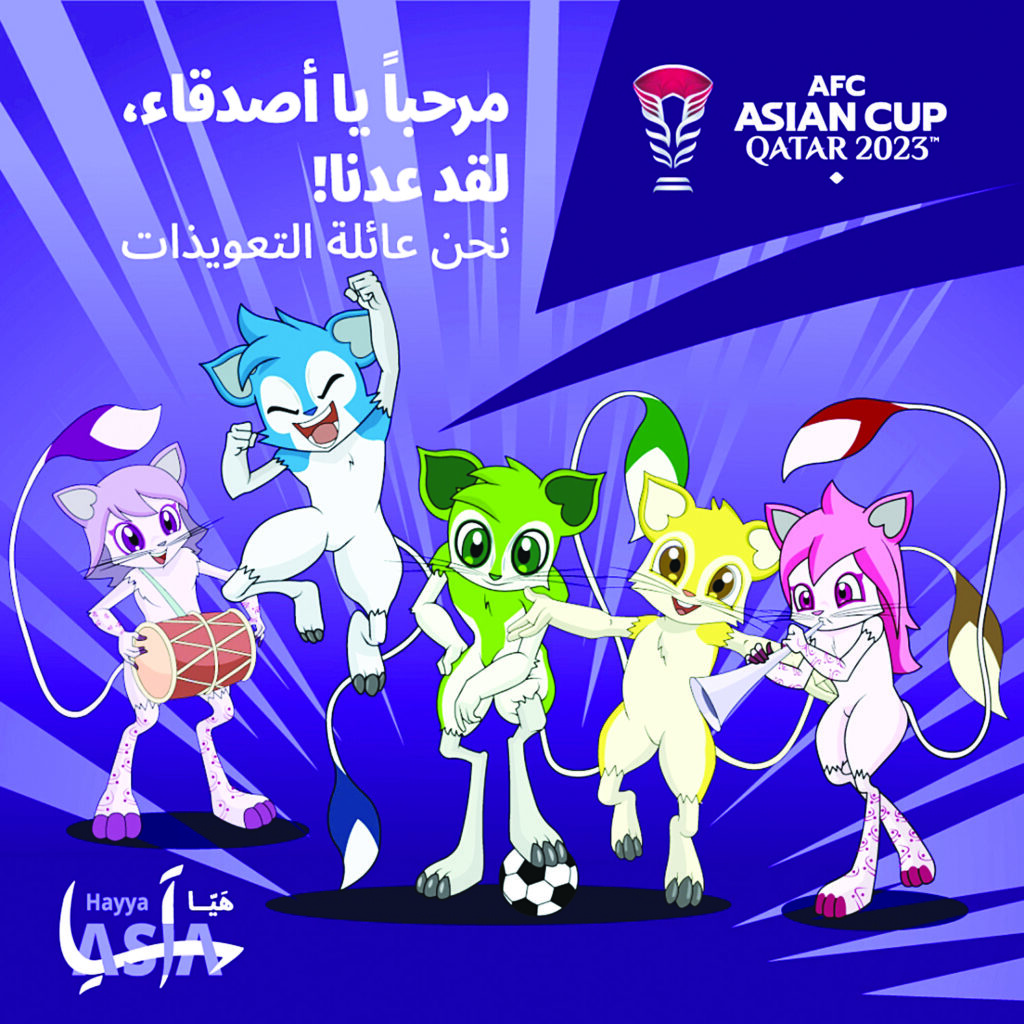02/12/2023
02/12/2023

DOHA, Dec 2: The Qatar Asia Cup 2023 Local Organizing Committee unveiled the tournament's mascot in a special ceremony held in Doha. The mascot, a family of jerboas, made its debut in the 2011 Asian Cup and has returned for the current edition, featuring characters known to football fans from 2011: Sabouk, Tembaki, Fariha, Zakriti, and Trina.
Described as embodying the dynamism of football players, the jerboa family symbolizes teamwork and celebrates the significance of family life in Qatar and the broader region, according to a statement from the committee. Hassan Al Kuwari, the Executive Director of Communications and Marketing, highlighted the mascot's return as a testament to Qatar's longstanding excellence in hosting major sporting events.
Al Kuwari emphasized the mascot's ability to evoke memories of the 2011 championship, capturing the excitement and energy of the tournament. The characters of the talisman draw inspiration from Qatar's natural environment, providing an opportunity to showcase the country's heritage and traditions to a global audience.
Qatari artist Ahmed Al-Maadeed, responsible for illustrating the mascot characters, expressed his intention to create an artistic work that inspires societal engagement with the Asian Cup. The selection of the jerboa, a desert-dwelling animal native to Qatar, was a deliberate choice to embody the spirit of the game.
Katara Studios produced an animation film featuring the characters of the Qatar 2023 Asian Cup mascot. This film, set to be enjoyed by audiences in the lead-up to and during the tournament (scheduled from January 12 to February 10, 2024), is expected to evoke nostalgic feelings reminiscent of beloved cartoon films.
The talismanic family includes Sabooq, the star athlete son in blue; Fariha, the eldest daughter in pink, named after the Fariha region in northern Qatar; Tembki, the younger brother of Sabuk in yellow, named after the Tembek region in eastern Qatar; Zakriti, the father in green, named after the Zakrit region in the west of Qatar; and Trina, the mother in purple, named after the Trina region in the south of Qatar.


